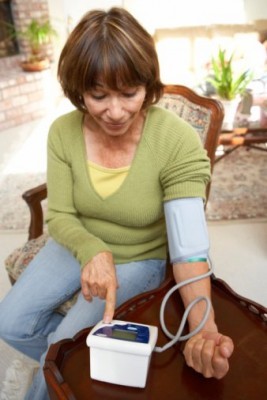Pre-Hypertension: Higher Than Normal Blood Pressure

If you think your blood pressure is OK because you’ve never heard the words, “You have high blood pressure,” think again. Take some time to learn about the newest blood pressure guidelines from the government’s National High Blood Pressure Education Program. These guidelines define a new category for blood pressure that is higher than normal. It’s called pre-hypertension.
Pre-hypertension
New guidelines think of pre-hypertension as blood pressure that is higher than normal, but not high enough to be diagnosed as high blood pressure. The new definitions released by the government in 2003 were published to make it known that blood pressure even a little bit above normal presents dangers and needs treatment.
Pre-hypertension is defined as blood pressure between 120/80 and 139/90. Like pre-diabetes, pre-hypertension must be controlled, or better yet, reversed in order to avoid making the condition worse. Unless you do something, you are likely to develop true high blood pressure in the future.
The Risks of Pre-Hypertension
Elevated blood pressure, (even a little bit higher than normal) can put you at risk for heart attack, stroke, and kidney disease. And everyone, especially diabetes patients should know this because high blood pressure is very common among people with diabetes. Almost two-thirds of people between the ages of 45 and 65 who have diabetes also have high blood pressure. An additional twenty percent of people with type 2 diabetes have pre-hypertension. So if you have been diagnosed with diabetes and pre-hypertension, you should start modifying your lifestyle and behavior. And don’t forget that blood pressure control can help lower your risk for diabetes complications, such as eye and kidney damage.
Do I need to take medication?
If you have pre-hypertension, it is important that you and your healthcare provider work together to lower it. The goal is to get it at least 120/80 mm Hg or lower. (130/80 if you have diabetes.) If your blood pressure reading is within a healthy range, you may not need to take medication. Talk with your healthcare provider about steps you can take to avoid getting hypertension. This will help you reduce your risk for developing heart attack, stroke, or kidney disease.
Most people who have pre-hypertension don’t need to start on blood pressure medication. The best way to treat pre-hypertension, according to the National High Blood Pressure Education Program, is to make a few changes in your lifestyle. The same advice is true for pre-diabetes. Here are some ideas:
- Increase physical activity: Get your healthcare provider’s approval if you’re not used to being active. Start by walking a few minutes every day. Try to be active for at least 30 minutes a day, five times a week.
- Eat healthy foods: Enjoy fruits, vegetables, whole grains. and low-fat dairy foods. Try to limit the amount of fat and saturated fat you eat.
- Lose weight if you are overweight: Every 10 pounds of weight loss can help drop your blood pressure by up to 10 points.
- Eat less salt and high-sodium foods: You should not exceed 2,400 mg of sodium per day. Don’t use the salt shaker and limit alcohol. No more than two drinks per day for men and one for women. Check out the related story below for more tips to lower your sodium intake.
So, learn what your blood pressure is. Is it normal, high, or in the new stage called pre-hypertension? If your blood pressure is even just a little bit high, take action. Your healthcare provider or pharmacist can answer any questions you may have. A few changes in your lifestyle now are likely to help you control your blood pressure in the future.

